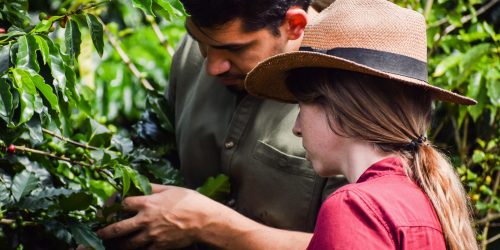The second session of the Regen Reflections series, co-hosted by SAI Platform and the Cool Farm Alliance, gathered over 130 practitioners to explore how organisations can align resources and secure buy-in to scale regenerative agriculture. While sector discussions importantly focus on building a compelling value proposition for farmers, it is also critical that in parallel, companies are presenting a clear business case for regenerative agriculture to leadership and across internal teams.
Making the Internal Case for Change
Presenting regenerative agriculture as a strategy for building long-term resilience amidst climate change is compelling. However, companies still face the significant challenge of balancing short-term financial pressures and conflicting internal KPIs with the longer-term return on regenerative agriculture investments. Adding to the complexity is the high cost and difficulty of accurately measuring the environmental impact of these initiatives.
To navigate this successfully, Catherine McCosker of 3Keel emphasised that successful buy-in starts with leadership and culture and this requires the framing of regenerative agriculture in commercial terms that resonate across the business.
While this alone is enough for some organisations, external levers such as regulatory pressures, consumer demand for sustainable products, and peer influence (such as with the adoption of Science Based Targets) are powerful drivers of internal change.
Co-Create Solutions
Margaret Henry, Vice President of Sustainable Agriculture, PepsiCo, echoed Catherine’s insights, emphasising the importance of listening to stakeholder needs and co-creating solutions to meet these. This helps to ensure that regenerative agriculture remains relevant to diverse audiences, from procurement and finance teams to farmers and external stakeholders. Regenerative agriculture’s context-specific nature often allows for a flexible outcome-focused approach, enabling the co-creation of solutions to help address the unique needs of each context.

Start Small and Scale
Margaret also shared how PepsiCo measured progress by starting regenerative agriculture initiatives in regions with stakeholders that were already open to adoption of regenerative practices. Early “quick wins” helped build momentum, helping to secure broader buy-in within the business. The key, she noted, is starting small with high-potential opportunities, and building results-backed momentum over time. PepsiCo scaled these efforts once initial pilots proved successful, making regenerative agriculture a core part of PepsiCo’s Positive Agriculture agenda.
Partnerships and Finance for Scaling
Scaling regenerative agriculture requires collaboration beyond the company alone. Kyle Rudzinski of Pollination Capital Partners pointed out the importance of innovative financing models such as blended capital, which combine corporate funding and impact investment along with government funding and grants to reduce risk and incentivise farmer participation in regenerative agriculture projects. Tim Crosby from TIFS highlighted how donor agencies like USAID provide first-loss capital reducing risk for private investors, facilitating larger-scale initiatives.
The Road Ahead
The clear message for companies from this session of Regen Reflections was to take the time to fully understand and align stakeholder needs before moving forward, to leverage existing initiatives where possible, and lastly, to pool resources through partnerships.
Securing internal buy-in and building a strong business case for regenerative agriculture requires cross-sector collaboration, innovative financing, and a long-term view. As momentum builds, more examples of successful multi-stakeholder initiatives will be shared in the upcoming webinars.
Stay tuned for the next session, which will explore how to build a compelling value proposition for farmers.









